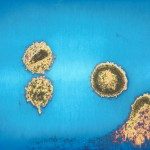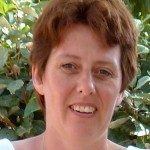Lien vers Pubmed [PMID] – 36692300
Lien DOI – e03267-2210.1128/spectrum.03267-22
Microbiol Spectr 2023 Feb; 11(1): e0326722
In the search for control of human immunodeficiency virus type 1 (HIV-1) infection without antiretroviral therapy, posttreatment controllers (PTCs) are models of HIV remission. To better understand their mechanisms of control, we characterized the HIV blood reservoirs of 8 PTCs (median of 9.4 years after treatment interruption) in comparison with those of 13 natural HIV infection controllers (HICs) (median of 18 years of infection) and with those of individuals receiving efficient antiretroviral therapy initiated during either primary HIV infection (PHIs; n = 8) or chronic HIV infection (CHIs; n = 6). This characterization was performed with single-genome amplification and deep sequencing. The proviral diversity, which reflects the history of past viral replication, was lower in the PTCs, PHIs, and aviremic HICs than in the blipper HICs and CHIs. The proportions of intact and defective proviruses among the proviral pool in PTCs were not significantly different from those of other groups. When looking at the quantities of proviruses per million peripheral blood mononuclear cells (PBMCs), they had similar amounts of intact proviruses as other groups but smaller amounts of defective proviruses than CHIs, suggesting a role of these forms in HIV pathogenesis. Two HICs but none of the PTCs harbored only proviruses with deletion in nef; these attenuated strains could contribute to viral control in these participants. We show, for the first time, the presence of intact proviruses and low viral diversity in PTCs long after treatment interruption, as well as the absence of evolution of the proviral quasispecies in subsequent samples. This reflects low residual replication over time. Further data are necessary to confirm these results. IMPORTANCE Most people living with HIV need antiretroviral therapy to control their infection and experience viral relapse in case of treatment interruption, because of viral reservoir (proviruses) persistence. Knowing that proviruses are very diverse and most of them are defective in treated individuals, we aimed to characterize the HIV blood reservoirs of posttreatment controllers (PTCs), rare models of drug-free remission, in comparison with spontaneous controllers and treated individuals. At a median time of 9 years after treatment interruption, which is unprecedented in the literature, we showed that the proportions and quantities of intact proviruses were similar between PTCs and other individuals. Unlike 2/7 spontaneous controllers who harbored only nef-deleted proviruses, which are attenuated strains, which could contribute to their control, no such case was observed in PTCs. Furthermore, PTCs displayed low viral genetic diversity and no evolution of their reservoirs, indicating very low residual replication, despite the presence of intact proviruses.







